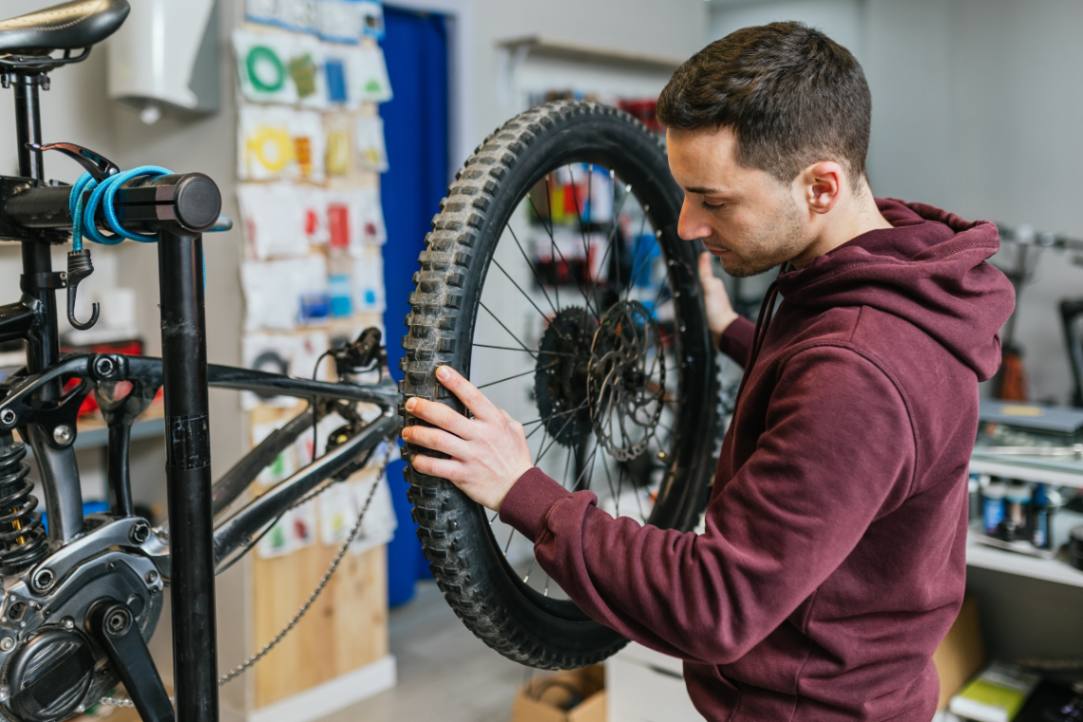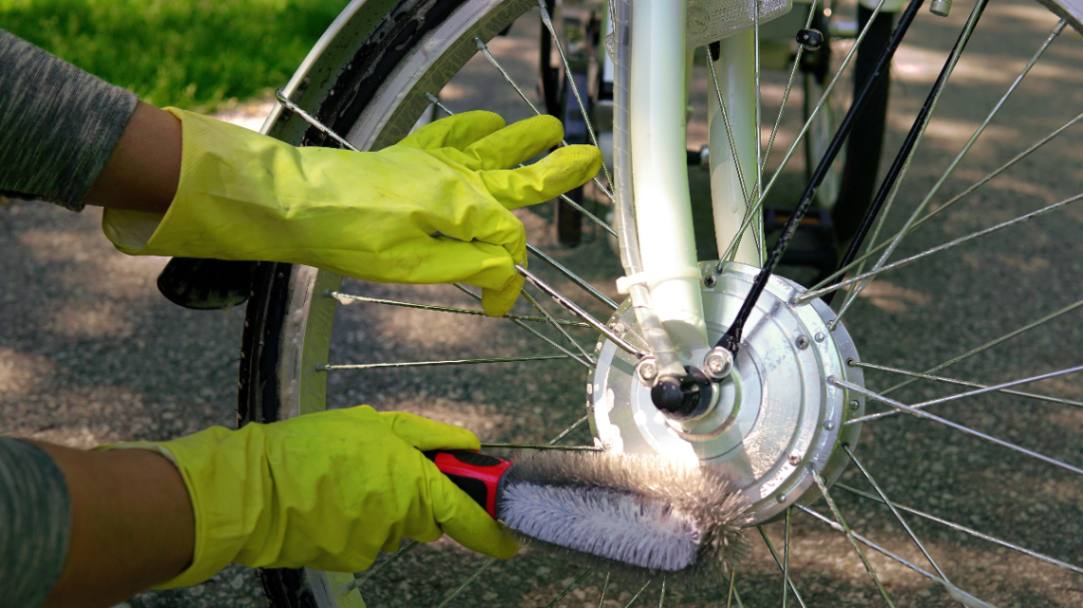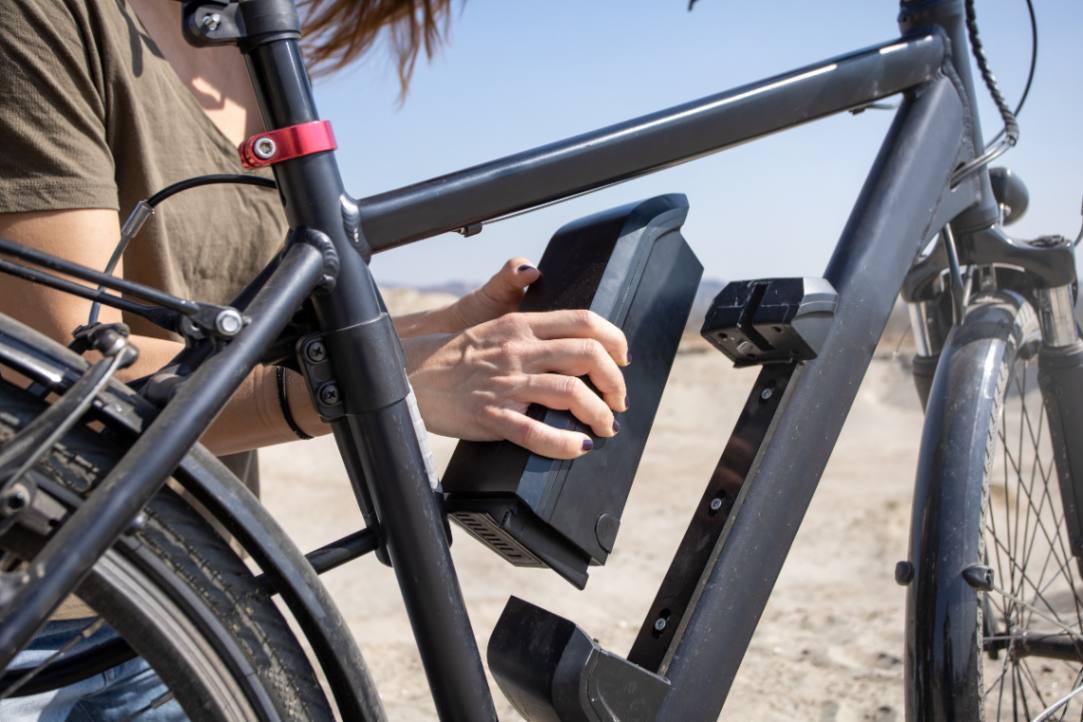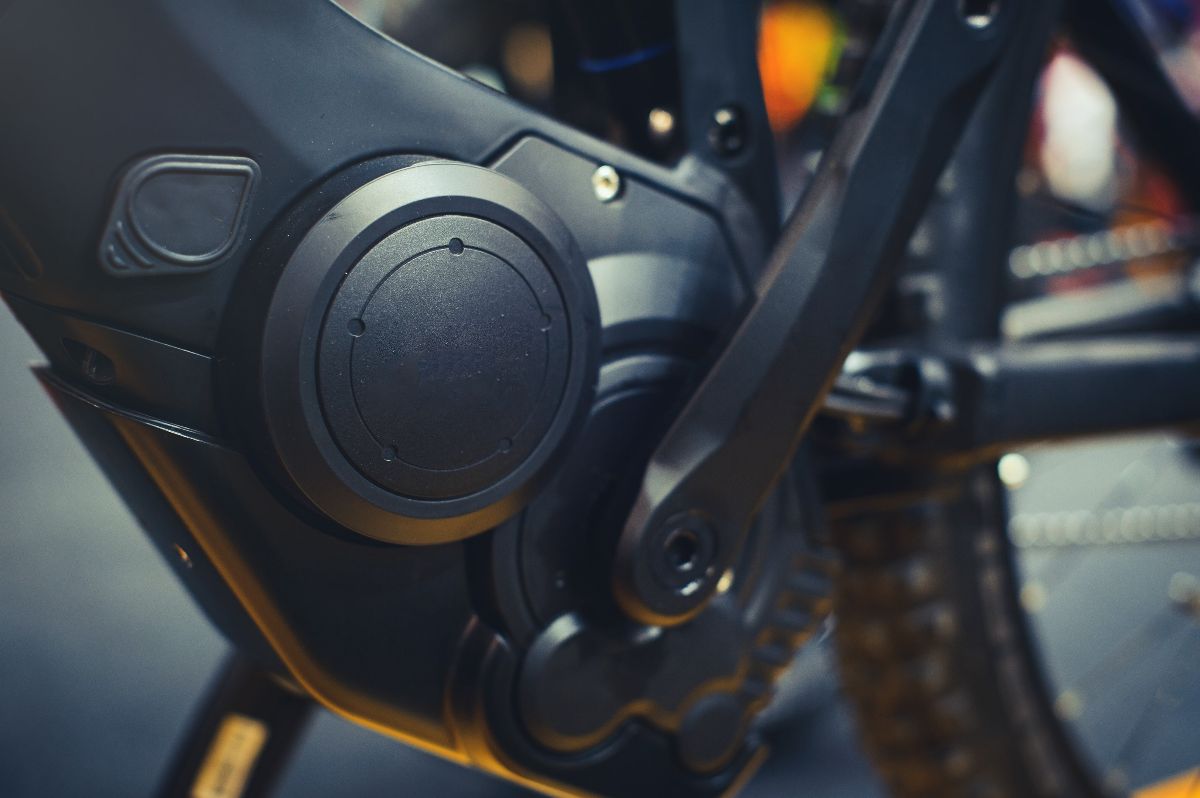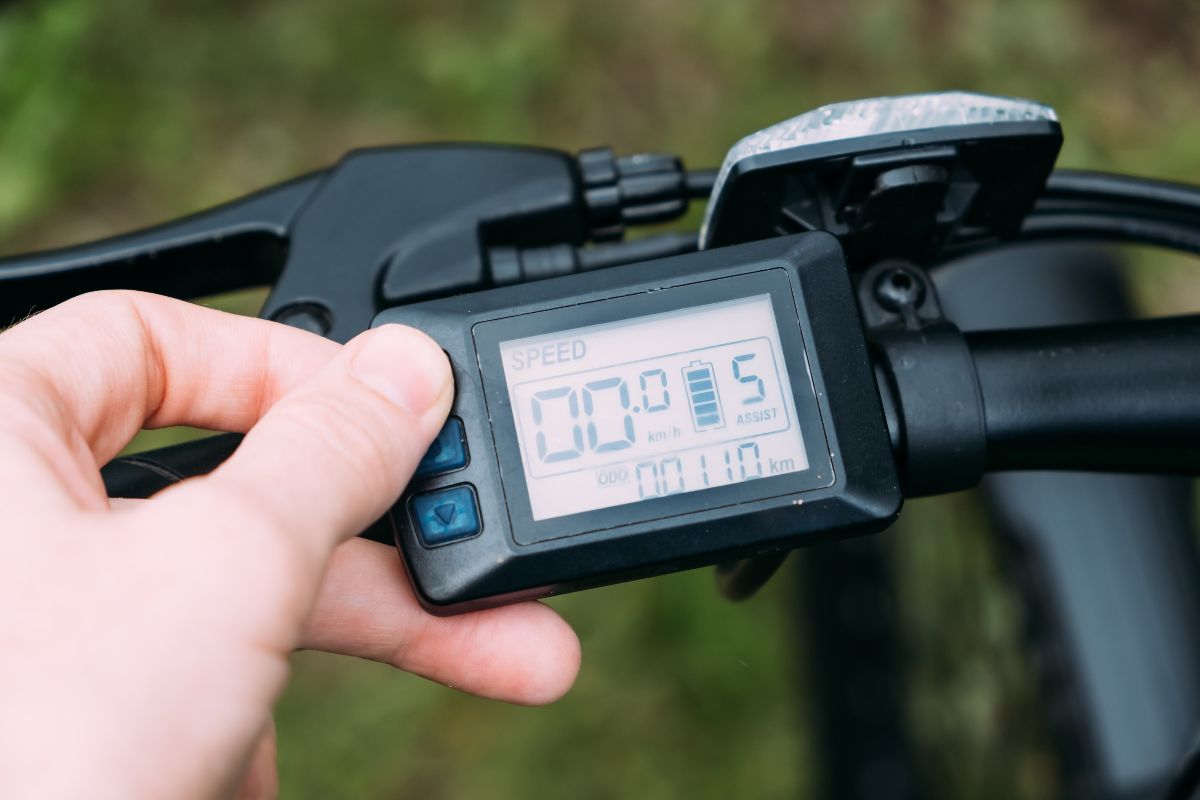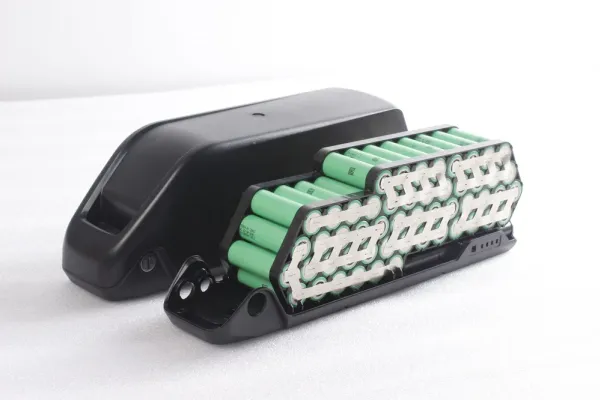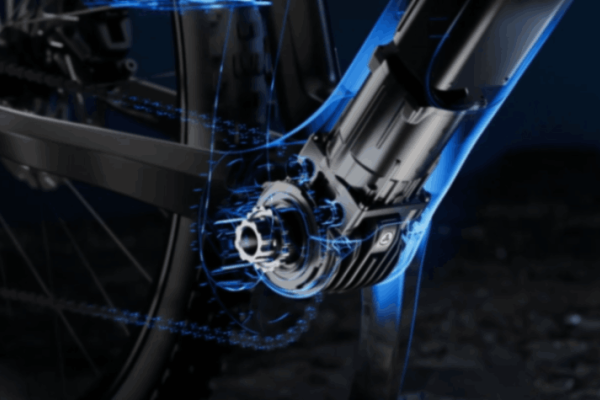E-bike maintenance guide: Tips for longevity and performance
Like any machine, electric bikes need looking after to keep working at their best. Thankfully none of it's rocket science - here are the essential tips.
Key takeaways
-
Simple cleaning and lubricating tasks are easy to do and will keep your e-bike running smoother for longer.
-
Most e-bike components are easy to inspect visually to identify anything that needs adjusting or replacing.
-
Apart from the drive system (and possibly suspension components), most parts of an e-bike are fairly easy to work on if you have the time and inclination.
-
If in doubt, consult a professional mechanic!
Table of contents
- Key takeaways
- Electric bike maintenance basics
- Pre-ride checks
- Component maintenance
- Electric bike battery care
- Motor and controller maintenance
- Software and app updates
- When to get your bike serviced
- Troubleshooting common issues
- Electric bike maintenance schedules
- Frequently Asked Questions
- Summary
Electric bike maintenance basics
Regular maintenance is crucial for the longevity and efficiency of your electric bike. Just like a traditional bike, an e-bike requires consistent care to ensure it runs smoothly, but there are some key differences to be aware of. Electric bike maintenance involves not only the standard procedures like cleaning and lubricating the chain but also paying special attention to the drivetrain, which is especially important for those who enjoy off-road riding. By regularly cleaning and maintaining your e-bike, you can prevent excessive wear on components and ensure a safer, smoother ride. This includes keeping an eye on the battery charge, checking tyre pressure, and inspecting brakes to avoid any unexpected issues. Proper maintenance helps extend the life of your e-bike, allowing you to enjoy your rides with confidence and peace of mind.
Pre-ride checks
-
Check tyre pressure: Ensure they are within the manufacturer’s specified range. A tyre with low pressure can lead to reduced efficiency and increased wear. You can identify this problem if the tyres feel soft or if the ride is bumpier than usual. To resolve this, use a pressure gauge to check the pressure and inflate the tyres to the recommended level.
-
Inspect brakes: Pull on the brake levers to ensure proper function. If you notice that the brakes feel loose or require more pressure to engage, this could indicate a problem. To fix this, tighten the brake cables or replace the brake pads if they are worn.
-
Check headset: Tighten if necessary to prevent play in the handlebar mount. If you feel a wobble in the handlebars or hear unusual noises when riding, the headset might be loose. Use an Allen key to tighten the bolts on the headset to eliminate any play.
-
Clean and lube chain: Use a rag and chain lube to keep the chain clean and lubricated. A dry or rusty chain can cause poor shifting and increased wear. If the chain appears dirty or makes noise, clean it with a rag and apply a high quality lubricant to ensure smooth operation.
-
Check battery charge: Use the handlebar display to check the battery charge level. If the battery is dying quickly or not holding a charge, it may need attention. Ensure the battery is fully charged before rides, and if issues persist, check for display error codes or consult a professional for battery servicing.
Component maintenance
Brake Maintenance
-
Inspect rim brake pads: Examine the brake pads for visible channels or grooves. If these channels are worn down or no longer visible, it indicates that the brake pads need replacing. Worn brake pads can lead to reduced braking efficiency, which can be dangerous. To resolve this, replace the brake pads with new ones to ensure optimal braking performance.
-
Check disc brake pads: Ensure there is at least 1mm of friction material remaining on the disc brake pads. If the material is worn down below this threshold, it's time for a replacement. Insufficient friction material can result in poor braking response and increased stopping distances. Replace the disc brake pads to maintain safe and effective braking.
Tyre maintenance
-
Tyre pressure check: Ensure tyre pressures are within the manufacturer’s specified range. A problem may present itself as tyres feeling soft or the ride being bumpier than usual. To address this, use a pressure gauge to check the pressure and inflate the tyres to the recommended level.
-
Tyre inspection: Look for signs of wear, damage, or uneven wear on the tyres. If you notice cracks, bald spots, or bulges, these are indicators of potential issues. Replace any damaged tyres immediately to ensure safety and performance.
Electric bike battery care
-
Charge the battery: Top it up whenever needed, but avoid overcharging. A problem may manifest as the battery losing charge quickly or not charging fully. To address this, ensure you are using the correct charger and avoid leaving the battery plugged in for extended periods. If issues persist, consult a professional for further inspection.
-
Store the battery: Keep it in a cool, dry place, away from direct sunlight. If the battery is stored in a hot or damp environment, it may lead to reduced performance or damage. Always store the battery in a temperature-controlled area and consider using a protective case to shield it from moisture.
-
Avoid extreme temperatures: Extreme temperatures can affect battery performance and lifespan. If you notice a decline in battery efficiency during very hot or cold weather, this could be due to temperature exposure. To mitigate this, avoid leaving your e-bike in direct sunlight or freezing conditions for extended periods.
-
Check battery health: Use the handlebar display to check the battery’s state of charge and health. If the display shows unusual readings or error codes, it may indicate a battery issue. Regularly monitor the battery's health and consult a professional if you notice any irregularities or if the battery life significantly decreases.
Learn more about electric bike batteries in our comprehensive e-bike battery guide.
Motor and controller maintenance
-
Keep the motor housing clean: Use a rag and motor cleaner to keep the housing clean and free of grit. If you notice an accumulation of dirt or debris, it could hinder the motor's performance. Regular cleaning will ensure the motor operates smoothly and efficiently.
-
Check motor temperature: If the motor feels excessively hot to the touch or you notice a burning smell, it could indicate overheating. Allow the motor to cool down and check for any obstructions or mechanical issues.
-
Update controller software: Regularly update the controller software to ensure proper functionality. If you experience lagging or unresponsive controls, outdated software might be the cause. Updating the software can resolve these issues and enhance performance.
-
Check wiring and connections: Many error codes and other issues are caused by loose, damaged or dirty electrical connections.
Software and app updates
-
Regularly Check for Software and App Updates: Keeping your e-bike's software and app updated is crucial for improving performance and extending battery life. A problem might manifest as sluggish performance or unexpected battery drain. To address this, regularly check for updates through the manufacturer's app or website and install them to ensure your e-bike operates efficiently.
-
Update the Bike’s Software and App: Ensuring your bike's software is up-to-date is essential for optimal performance and safety. If you notice lagging controls or the bike not responding as expected, outdated software might be the culprit. To resolve this, update the bike’s software and app according to the manufacturer's guidelines to enhance functionality and safety.
-
Tailor the Performance of Your Bike with Apps and Displays: Some apps and displays allow you to customize the performance of your bike to suit your riding style. If your bike feels off or not aligned with your preferences, explore app settings for performance adjustments. Adjusting these settings can lead to a smoother ride and better overall experience.
When to get your bike serviced
-
Regularly service your bike: Schedule routine maintenance every three to six months to ensure proper functionality and prevent major repairs. During servicing, check key components like the brakes, chain, and battery. If you notice any unusual noises or issues during rides, immediately address them by consulting your maintenance checklist or seeking professional help.
-
Take your bike to a professional service centre: If you're not comfortable with ebike maintenance, have your bike serviced by a professional at least once a year. They can perform detailed inspections and address any complex issues. If your bike is not performing as expected, don't hesitate to make an appointment for a thorough check-up.
-
Consider your usage and frequency: Adjust your maintenance schedule based on how often and where you ride. For frequent riders or those who tackle rough terrains, more frequent maintenance might be necessary, such as monthly checks. If you experience excessive wear or performance issues, increase the frequency of your service appointments to maintain optimal bike condition.
Troubleshooting common issues
- Check the battery: If your bike is not turning on or not performing properly, the battery might be the culprit. Start by ensuring the battery is securely connected and fully charged. If the bike still doesn't turn on, check for any display error codes that might indicate a deeper issue. In case of persistent problems, consult the user manual for troubleshooting steps or seek professional assistance to inspect the electrical connections and battery health.
- Check the brakes: If your bike is not stopping properly, it could be a sign of brake wear or misalignment. Inspect the brake pads for excessive wear and ensure the brake levers engage smoothly. If the brakes feel spongy or require more pressure to engage, it might be necessary to tighten the brake cables or replace the brake pads. For persistent issues, have a professional check the brake system to ensure all components are functioning correctly.
- Check the chain: If your bike is not shifting properly, the chain might be dirty or improperly lubricated. Examine the chain for dirt, rust, or signs of wear. Clean the chain with a rag and apply a high quality lubricant to ensure smooth operation. If the chain continues to skip or the gears grind, it may need to be adjusted or replaced. Consult the bike's manual for specific instructions or take it to a professional for a thorough assessment.
Electric bike maintenance schedules
Weekly e-bike checklist
To ensure optimal performance and safety, follow this weekly checklist:
-
Tyre pressure: Check tyre pressure to ensure it is within the manufacturer’s recommended range. Adjust as necessary using a pressure gauge.
-
Brake functionality: Test brake levers and ensure they engage smoothly. Tighten brake cables if needed.
-
Battery charge level: Verify the battery is fully charged and inspect for any unusual display error codes.
-
Chain condition: Inspect the chain for dirt or rust and clean it with a rag. Apply a high quality lubricant if necessary.
-
Lights and reflectors: Ensure all lights and reflectors are clean and functioning correctly for safety during rides.
Monthly e-bike checklist
To ensure optimal performance and safety, follow this monthly checklist:
-
Detailed brake inspection: Examine brake pads for wear and replace them if necessary. Check disc brake pads for sufficient friction material.
-
Tyre inspection: Inspect tyres for signs of wear, damage, or cracks. Rotate tyres if needed to ensure even wear.
-
Battery health check: Monitor the battery’s state of charge and health using the handlebar display. Address any error codes or irregularities.
-
Motor and drivetrain: Clean the motor housing and drivetrain, removing any grit or debris. Check for unusual noises or performance issues.
-
Software updates: Check for any available software or app updates and install them to ensure optimal bike performance.
Six-monthly e-bike checklist
To ensure optimal performance and safety, follow this six-month checklist:
-
Comprehensive brake system check: Inspect all brake components, including levers, cables, and pads. Replace any worn parts to maintain optimal braking performance.
-
Electrical system inspection: Examine wiring harnesses and electrical connections for signs of wear or damage. Ensure all connections are secure.
-
Chain and gear inspection: Check the chain and gears for excessive wear. Clean and lubricate the chain, and adjust gears for smooth shifting.
-
Battery and charger: Inspect the battery and charger for signs of wear or damage. Ensure the charger is functioning correctly and not causing battery issues.
-
Frame and structural integrity: Examine the bike frame, crank arms, and other components for signs of stress or damage. Tighten any loose bolts or connections.
Annual e-bike checklist
To ensure optimal performance and safety, follow this annual checklist:
-
Professional service: Take your e-bike to a professional service center for a detailed inspection and servicing. Address any complex issues or concerns.
-
Battery lifespan assessment: Evaluate the battery’s lifespan and performance. Consider replacing it if there is a significant decline in efficiency.
-
Motor maintenance: Have the motor professionally inspected and serviced. Ensure it operates smoothly and efficiently.
-
Component replacement: Replace any worn or damaged components, such as tyres, brake pads, or chains, to maintain optimal performance.
-
Storage and transportation: Review your storage and transportation practices to ensure they align with best practices for maintaining e-bike longevity and performance.
Frequently Asked Questions
Regular maintenance is key to ensuring your e-bike's proper functionality and longevity. For most electric bikes, it's recommended to perform basic checks, such as tyre pressure and brake functionality, weekly. More thorough inspections, like checking the drivetrain and battery health, should be done monthly. A comprehensive service by a professional should be scheduled annually or more frequently if you ride often or in challenging conditions.
Can I maintain my electric bike myself, or do I need a professional?
Many e-bike maintenance tasks can be easily done at home, such as cleaning the bike chain, checking tyre pressures, and inspecting brake pads. Tasks like replacing pads or cassette sprockets are also straightforward. Anything involving the motor or battery is trickier, though. For complex issues or if you notice unusual noises or display error codes, it's advisable to consult a professional. They can perform detailed inspections and ensure all electrical components and motors are in optimal condition.
Should I leave my e-bike battery plugged in all the time?
It's not recommended to leave your e-bike battery plugged in continuously, as this can lead to overcharging and reduce battery lifespan. Instead, charge the battery regularly but avoid extended periods of being fully charged or fully discharged. Store the battery at around 50% charge if not using the bike for an extended period to maintain battery health.
Summary
Maintaining your electric bike is essential for ensuring a smooth, safe, and enjoyable riding experience. By following this comprehensive e-bike maintenance guide, you can extend the life of your e-bike and keep it performing at its best. From regular checks on tyre pressure and brake functionality to ensuring your battery is charged and healthy, these steps will help you avoid common issues and keep your e-bike in top condition. Remember to periodically update your software and apps to enhance functionality and safety.
Embrace the joy of riding with confidence, knowing that your e-bike is well-cared for and ready to tackle any adventure. Let's keep the wheels turning and the energy flowing – because a well-maintained e-bike means more freedom to explore and more miles of unforgettable experiences. Get out there and ride with peace of mind!
Related content
Read more great content from ebike.help and become an electric bike expert today.

